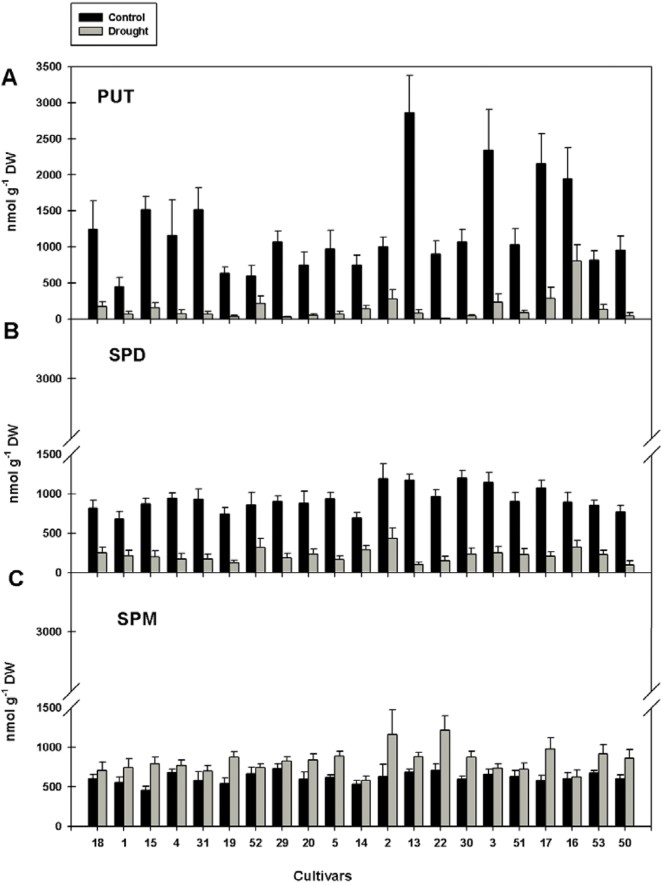Polyamine Quantitative Profiling Service
Personalized Polyamine Analysis in Biomass at Creative Biolabs
Polyamine is a class of nitrogen-containing organic compounds that play vital physiological functions in organisms. They participate in various biological processes such as cell growth, division, and metabolic regulation. In biomass such as plants and seaweed, Polyamine also helps maintain the stability of cell structure and promotes growth and development. Creative Biolabs has a good reputation and word of mouth. Our team of experts provides reliable Biomass and Seaweed Analysis services, including analysis of polyamine content, through advanced laboratory equipment and technology.
We perform appropriate processing on biomass or seaweed samples, such as grinding and homogenization, to increase extraction efficiency and ensure that representative samples are obtained.
We use appropriate extraction solvents (such as acidic or alkaline solutions) to separate polyamine from the sample matrix. Common extraction methods include soaking, oscillation, or ultrasonic extraction. Then the target polyamine is separated and purified by solid phase extraction, liquid-liquid extraction, etc. Finally, the sample is subjected to appropriate concentration and purification steps to obtain sample extracts for subsequent analysis. The execution of these steps ensures the effective extraction of polyamine in biomass and seaweed, providing a reliable sample basis for subsequent quantitative analysis.
-
Quantitative analysis of polyamine
-
High-performance liquid chromatography (HPLC): We usually use HPLC combined with different detectors to achieve quantitative analysis of polyamine in biomass and seaweed. An ultraviolet detector (UV) is based on absorption spectrum characteristics to identify and quantify polyamine. It is suitable for the analysis of polyamine types such as spermine, putrescine, phenylethylamine, etc. A fluorescence detector (FLD) has high sensitivity and selectivity for polyamine with fluorescent activity (such as putrescine).
-
Mass spectrometry (MS): Different chromatography methods combined with MS improve the accuracy and sensitivity of detection, identification, and quantification of polyamine, and also provide information such as the structure and fragment ions of polyamine. HPLC-MS is used for qualitative and quantitative analysis of various polyamines. Gas chromatography-mass spectrometry (GC-MS) is used for the analysis of small amounts of volatile polyamine. We use appropriate derivatization methods to convert polyamine into volatile products before analyzing them.
-
Ion chromatography (IC): It is a fast, reliable, and sensitive analytical method, which is used for the quantitative analysis of various polyamines. We select appropriate ion chromatography columns and buffer systems to achieve effective separation and detection of polyamines in biomass samples.

Creative Biolabs provides personalized polyamine analysis solutions according to client needs, including sample processing, experimental design, and data interpretation. In addition, we also provide Polyphenol and Terpene Analysis services in biomass samples. Please contact us if you need detailed analysis details and quotation information.
Published data
Drought is a key factor affecting rice yield. During rice growth, polyamine content, especially putrescine (Put), spermidine (Spd), and spermine (Spm), is related to biological processes such as plant growth, development, and apoptosis. The authors classified twenty-one rice varieties according to their drought tolerance and studied the changes in polyamine content in rice samples after drought treatment. The authors first homogenized the leaf samples by ball mill, then extracted the free polyamines with perchloric acid, and then quantified the different polyamine categories by HPLC. The results showed that under control conditions, the difference in Put content in leaves of different varieties was greater than the difference in Spd and Spm content. When the leaf samples were subjected to a period of drought treatment, the levels of Put and Spd decreased significantly, while the level of Spm remained unchanged or increased slightly. This showed that under control conditions, Put was the main polyamine, while under drought conditions, Put content decreased and Spm became the main polyamine, but there was no significant correlation between drought tolerance and polyamine content.
 Fig.1 Polyamine content in leaves under control and drought conditions.1, 2
Fig.1 Polyamine content in leaves under control and drought conditions.1, 2
FAQs
Q1: What types of samples do your analysis services cover?
A1: We perform polyamine analysis on a variety of biomass and seaweed samples, including but not limited to plant tissues, seaweed extracts, etc.
Q2: How is the accuracy of polyamine analysis guaranteed?
A2: We use advanced analytical techniques and standardized methods to ensure the accuracy of the results, and will set up quality control samples during the experiment to ensure reliability.
Q3: What is the report format of polyamine analysis? What information is included?
A3: We will provide clients with a detailed report, including quantitative data on polyamine content, analytical methods, sample information, and necessary data interpretation and conclusions.
Customer Review
Comprehensive Analysis of Polyamine Content
"I am very grateful to the scientists of Creative Biolabs for providing us with polyamine analysis services. The professional level is high and the service attitude is good. It allows us to have a more comprehensive understanding of the polyamine content in the samples. I look forward to future cooperation!"
Clear Reports Bring New Insights to Scientific Research
"I am very satisfied with the polyamine analysis provided by Creative Biolabs. The report is clear and the data interpretation is thorough, which brings new perspectives and inspiration to our scientific research work."
References
-
Do, Phuc Thi, et al. "Dissecting rice polyamine metabolism under controlled long-term drought stress." PLoS One 8.4 (2013): e60325.
-
Under Open Access license CC BY 4.0, without modification.
For Research Use Only.
Related Services


 Fig.1 Polyamine content in leaves under control and drought conditions.1, 2
Fig.1 Polyamine content in leaves under control and drought conditions.1, 2

